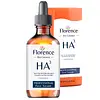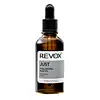What's inside
What's inside
 Key Ingredients
Key Ingredients

 Benefits
Benefits

 Concerns
Concerns

 Ingredients Side-by-side
Ingredients Side-by-side

Water
Skin ConditioningAloe Barbadensis Leaf Juice Powder
Skin ConditioningSodium Levulinate
Skin ConditioningSodium Hyaluronate
HumectantPotassium Sorbate
PreservativePanthenol
Skin ConditioningSodium Benzoate
MaskingSodium Lactate
BufferingXanthan Gum
EmulsifyingNiacinamide
SmoothingTetrasodium Glutamate Diacetate
Sodium PCA
HumectantSodium Ascorbyl Phosphate
AntioxidantCentaurea Cyanus Flower Water
Skin ConditioningGlycine
BufferingHydrolyzed Hyaluronic Acid
HumectantParfum
MaskingFructose
HumectantUrea
BufferingGlycerin
HumectantHamamelis Virginiana Extract
AntiseborrhoeicTamarindus Indica Seed Polysaccharide
Skin ConditioningLactic Acid
BufferingInositol
HumectantWater, Aloe Barbadensis Leaf Juice Powder, Sodium Levulinate, Sodium Hyaluronate, Potassium Sorbate, Panthenol, Sodium Benzoate, Sodium Lactate, Xanthan Gum, Niacinamide, Tetrasodium Glutamate Diacetate, Sodium PCA, Sodium Ascorbyl Phosphate, Centaurea Cyanus Flower Water, Glycine, Hydrolyzed Hyaluronic Acid, Parfum, Fructose, Urea, Glycerin, Hamamelis Virginiana Extract, Tamarindus Indica Seed Polysaccharide, Lactic Acid, Inositol
 Reviews
Reviews

Ingredients Explained
These ingredients are found in both products.
Ingredients higher up in an ingredient list are typically present in a larger amount.
Panthenol is a common ingredient that helps hydrate and soothe the skin. It is found naturally in our skin and hair.
There are two forms of panthenol: D and L.
D-panthenol is also known as dexpanthenol. Most cosmetics use dexpanthenol or a mixture of D and L-panthenol.
Panthenol is famous due to its ability to go deeper into the skin's layers. Using this ingredient has numerous pros (and no cons):
Like hyaluronic acid, panthenol is a humectant. Humectants are able to bind and hold large amounts of water to keep skin hydrated.
This ingredient works well for wound healing. It works by increasing tissue in the wound and helps close open wounds.
Once oxidized, panthenol converts to pantothenic acid. Panthothenic acid is found in all living cells.
This ingredient is also referred to as pro-vitamin B5.
Learn more about PanthenolSodium Hyaluronate is hyaluronic acid's salt form. It is commonly derived from the sodium salt of hyaluronic acid.
Like hyaluronic acid, it is great at holding water and acts as a humectant. This makes it a great skin hydrating ingredient.
Sodium Hyaluronate is naturally occurring in our bodies and is mostly found in eye fluid and joints.
These are some other common types of Hyaluronic Acid:
Learn more about Sodium HyaluronateWater. It's the most common cosmetic ingredient of all. You'll usually see it at the top of ingredient lists, meaning that it makes up the largest part of the product.
So why is it so popular? Water most often acts as a solvent - this means that it helps dissolve other ingredients into the formulation.
You'll also recognize water as that liquid we all need to stay alive. If you see this, drink a glass of water. Stay hydrated!
Learn more about WaterXanthan gum is used as a stabilizer and thickener within cosmetic products. It helps give products a sticky, thick feeling - preventing them from being too runny.
On the technical side of things, xanthan gum is a polysaccharide - a combination consisting of multiple sugar molecules bonded together.
Xanthan gum is a pretty common and great ingredient. It is a natural, non-toxic, non-irritating ingredient that is also commonly used in food products.
Learn more about Xanthan Gum